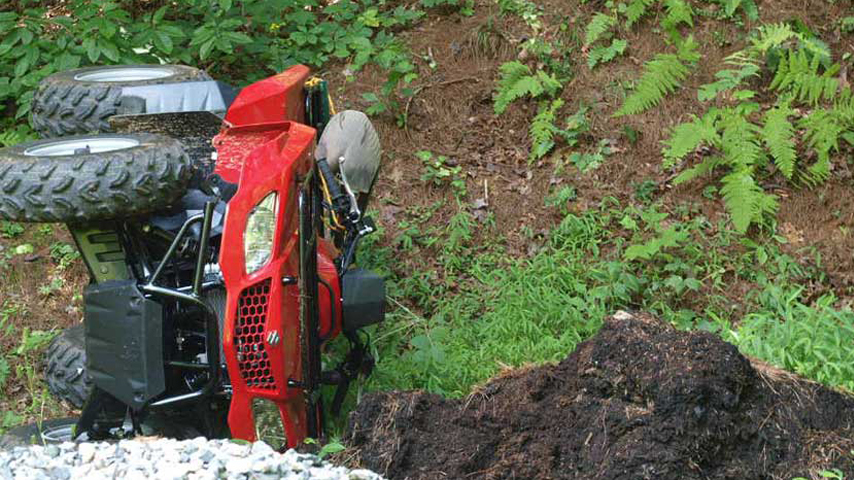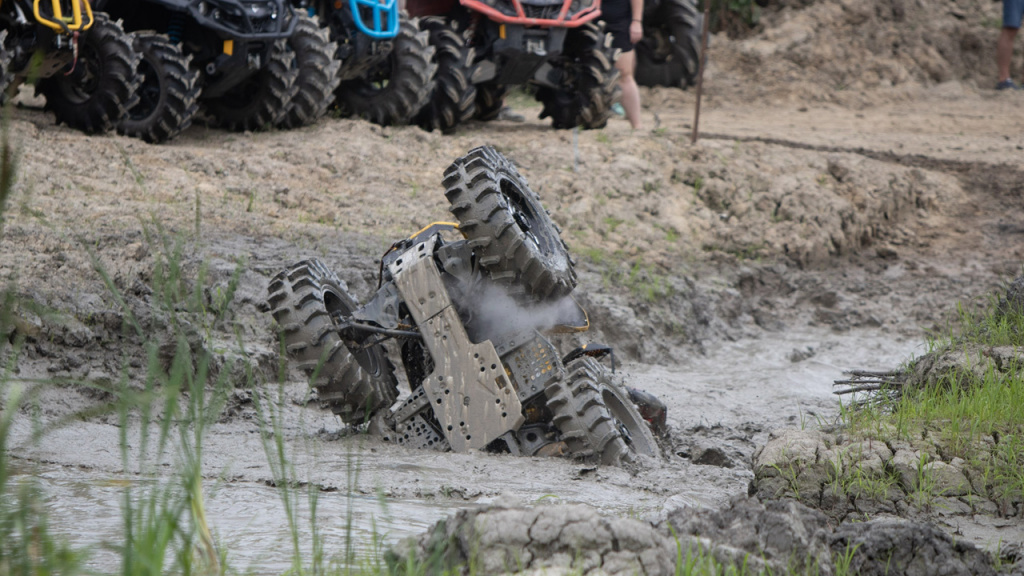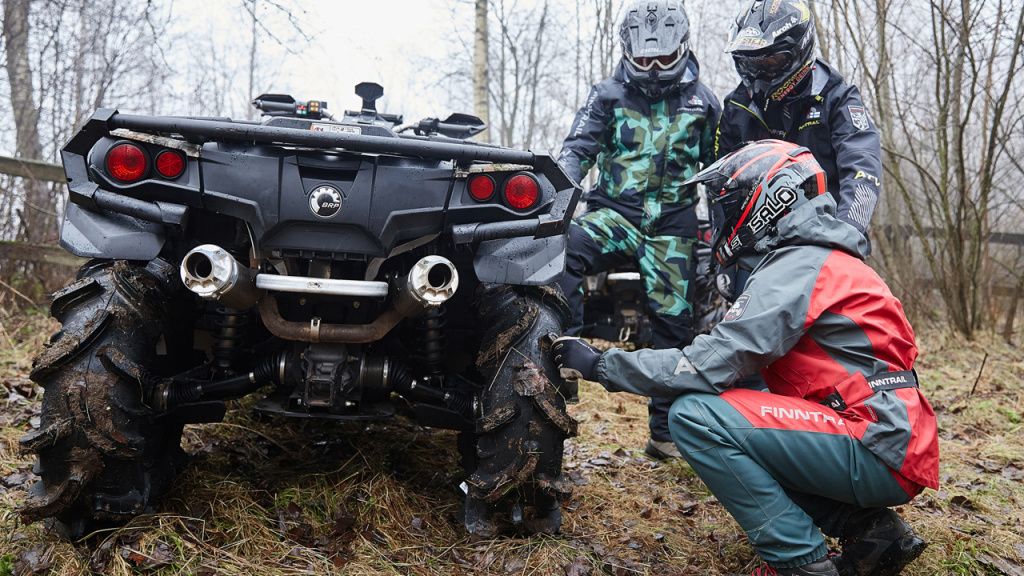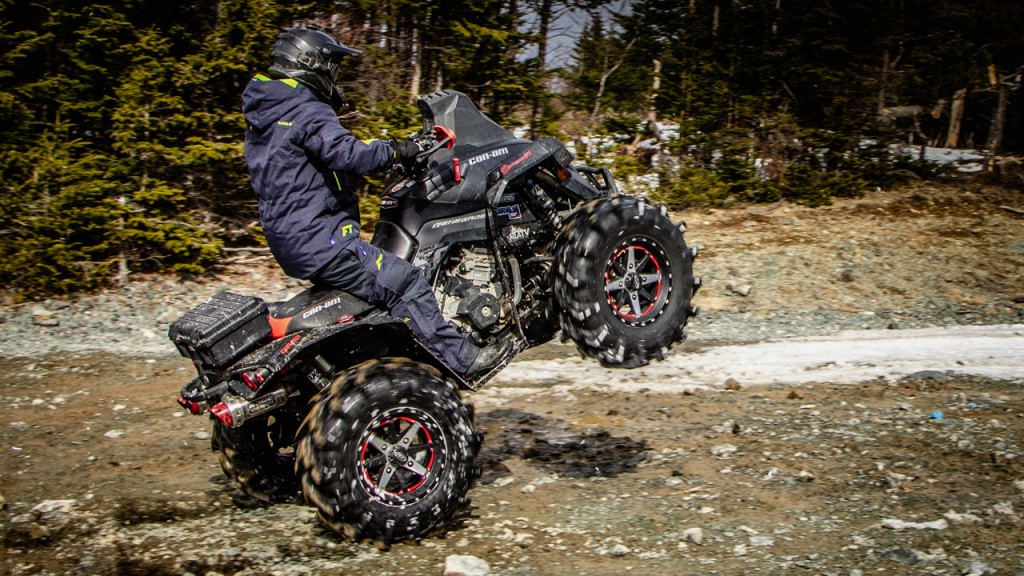ATV Rollover: What Causes It & How to Fix It
An ATV rollover is a very serious hazard that can happen to any rider no matter their skill level. And it happens in an instant. Prevention is your single best defense. This post will help you understand what causes ATV rollovers, how to prevent them, and what to do should you experience one.
What Causes an ATV Rollover

ATVs are more prone to flipping and rolling over than any other off-road vehicles. They are relatively narrow so they can navigate the varied terrain you encounter and they carry the weight of the machine, rider, and storage up high.
UTVs are less likely to flip and roll than ATVs, but you should still be mindful. Both machines can flip backward, forward, or sideways.
What to Do if You Flip Your ATV Over on The Trails

Evaluate personal safety
Check yourself and anyone involved in the accident for injuries. Administer first aid and/or get help, depending on the injury.
Get the ATV back on its wheels
Five minutes or more after the rollover, roll your ATV right side up again.
Wait five more minutes to let oils and fluids settle.
Mind the controls
Visually inspect the cables going to the throttle, handbrake, and clutch levers. If you have any handlebar accessories, make sure they haven't gotten caught up in the cables or otherwise interfere with the controls.
Try the controls and brakes to make sure they all function.
Inspect the wheels and tires
Check the wheels and tires for dents, punctures, or any other sign of damage.
Get on
If the ATV looks sound, ride it slowly for a minute, stopping, starting, and turning in both directions. If it does this well, you should be able to drive the ATV carefully back to the trailer.
Post Roll Maintenance

Back in the garage, you'll need to do some more thorough inspections.
Check the wheel alignment
Take the wheels off and clamp a straight edge to the brake hubs horizontally. Measure the distance in both the front and the back to make sure they're even.
Check the upper control arms to make sure they aren't bent. Turn the straight edge vertically and measure again.
Put the wheels back on and turn the handlebar straight. Does it align with the wheels?
Inspect the tank
Make sure there isn't a gas leak or visible damage to the tank.
Check fluids
Check your oil, coolant, and transmission fluid for low levels and leaks.
Look at the frame
Give your ATV frame a thorough examination for major or minor damage including bends, cracks, and loose joints. Be mindful that what is minor now could quickly become major and evaluate the need for repair.
Check the bolts
Make sure all of your nuts and bolts are there, firmly in place, and not damaged. The lug nuts, axle nut, pivot ball, skid plate, sprocket bolts, and wheel hubs are particularly important.
Avoid ATV Rollover

Body positions
Learn and practice the proper body positions to maintain balance and center of gravity and to keep the ATV from taking you with it should it flip.
Know yourself and your machine
You may not have the skill level to go certain speeds, tackle certain trails, ride one of the more powerful machines, or do tricks. Don't push yourself. Do what's fitting for you and go slow trying new things so you can build your skill.
Your machine also has limitations. Don't take it up a hill too steep or through mud or water too deep or try to do jumps in machine that is too heavy.
Stay alert
You have to be 100% aware of what's going on around you and be prepared to act at all times when on your ATV. If you are tired, not sober, distracted, or uncomfortable, you will not be able to safely operate your machine.
Avoid unsafe locations
Don't drive on pavement unless it is to safely cross a road. ATV tires are not designed for pavement and your chances of rolling over are greatly increased. Stick to ATV trails and don't go on paths that have been closed. If you're out in untamed territory, be very careful. Don't cross any water or mud if you don't know how deep it is or if it is too deep to safely cross. Water more than a few inches deep is unsafe. Mud is a bit more complicated because it depends on your tires and the type of mud. Be very careful on ice. It is way too easy to misjudge the strength of ice.
Drive smart
Go slow and build your skills when you're starting out on an ATV, trying something new, or hitting a new trail.
Learn to corner and maneuver your machine safely to reduce the chances of a rollover. Turning, going uphill and downhill, and many other little moves on your ATV need to be done precisely and with skill to reduce the chance of tipping.








































